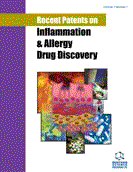Abstract
Actinic Keratoses (AK) are considered a worldwide problem with continuously increasing incidence. They clinically present as rough or scaly plaques and are histologically characterized by a proliferation of atypical keratinocytes limited to the epidermis. AK are considered as an early step in the continuum of transformation from normal skin to invasive squamous cell carcinoma (SCC). These lesions develop on a background of field cancerization in which chronically UV- damaged-areas accumulate molecular changes, but remain clinically normal for prolonged periods. The presence of certain clinical features of AK, such as large size, ulceration, or bleeding, suggests an increased risk of disease progression. The risk is also increased by evidence of extensive solar damage, advanced age, and immune-suppression. Many treatment modalities are available, although recent developments have focused on the management of the whole actinically damaged field. In this regard, several topical drugs have been approved, differing in efficacy, side effects, application and cost. Research continuingly aims to develop the “ideal” treatment which combines high clearance rates with few side effects, short treatment duration and low costs. Herein, we aim to give an overview on current treatment modalities including their mechanism of action, application scheme and common side effects. Furthermore, recent patents in the field and future aspects are discussed in this review.
Keywords: Actinic damage- field cancerisation- immunomodulation-non melanoma skin cancer-topical treatment.
 25
25


















